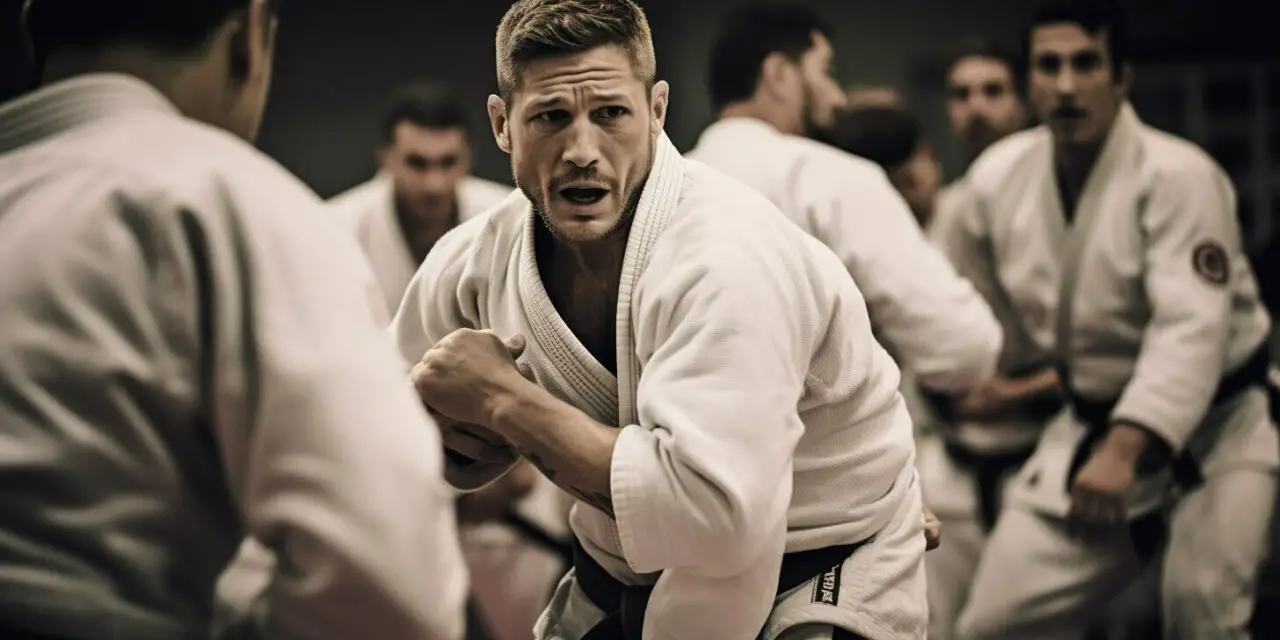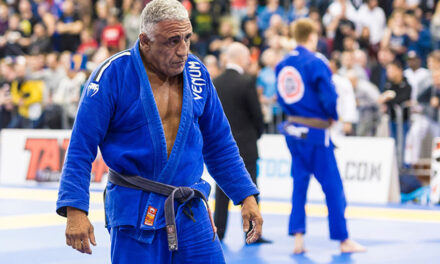Before stepping onto the mats for your first Brazilian Jiu-Jitsu (BJJ) class, you may wonder whether you need to be in shape beforehand. At our gym, we get asked the same two questions all the time by prospective members, the first question is “do I need to be in shape to do BJJ?” and the second question is, “what should I do to get in shape for BJJ?” The answers I always give are “no, you do not need to be in excellent physical condition to start BJJ” and “the best way to get in shape for BJJ is by doing BJJ.” But I will also emphasise that being in shape can undoubtedly enhance your experience and performance in the sport.
BJJ is a strenuous martial art that requires a combination of endurance, strength, and flexibility. Therefore, while it’s not necessary to be in peak physical shape before starting, it’s crucial to understand the physical demands of the sport and train accordingly to meet them.
Understanding the Fitness Requirements for BJJ
While BJJ is, fir the most part a relatively low-impact martial art, it still requires a high level of physical fitness to perform at your best. BJJ requires a combination of strength, endurance, flexibility, and agility. This is why it’s essential to have a good fitness level before starting BJJ, and continue to train your body throughout your BJJ journey.
BJJ can be physically demanding, especially when rolling or sparring with a partner. When grappling, you engage your whole body and require muscle endurance to maintain your physical performance over a longer period. Physical conditioning is a critical aspect of BJJ, not only to perform better but also to reduce the risk of injuries.
“BJJ demands a high level of fitness, not only to perform better but also to reduce the risk of injuries.”
BJJ training will help you improve your fitness level by working on your cardiovascular capacity, strength, and flexibility. However, it’s recommended to have an appropriate level of fitness before starting BJJ, so you can fully enjoy the benefits of this martial art.
Getting in Shape for BJJ
If you’re new to fitness, getting in shape can seem daunting, but don’t worry. There is no need to be an elite athlete to start BJJ. As mentioned earlier, BJJ training will help improve your fitness level, but it’s essential to have some baseline fitness level before beginning.
Start by incorporating cardio and strength training exercises into your workout routine. Running, cycling, and swimming are great cardiovascular exercises that will help you improve endurance and stamina for BJJ. For strength training, focus on functional exercises that target the muscles used in BJJ, such as pull-ups, push-ups, squats, and deadlifts.
Additionally, stretching and mobility work will help you improve your range of motion and flexibility, which are essential elements in BJJ. Improving your flexibility will help you avoid injuries and enable you to perform techniques more effectively.
Overall, the key to getting in shape for BJJ is consistency and perseverance. A regular fitness routine combined with BJJ training will guarantee progress and results in the long run.
Benefits of Being Fit for BJJ
Being physically fit is essential for success in Brazilian Jiu-Jitsu (BJJ). Besides helping you perform better on the mats and reducing your risk of injury, there are many other benefits of being in good shape for BJJ.
Improved Endurance: BJJ requires sustained cardiovascular endurance, which means you need to be able to maintain your energy and focus for long periods of time. Being fit allows you to last longer during training and competitions and recover more quickly between rounds.
Increased Strength: Strength training can improve your grappling abilities and help you execute techniques with greater force and precision. Plus, building strength can help you avoid injuries as you become better able to handle the physical demands of BJJ.
Better Flexibility: BJJ requires a high level of flexibility, especially in the hips, shoulders, and spine. Regular stretching and mobility exercises can help maintain your flexibility, allowing you to perform techniques more effectively and avoid injuries.
Injury Prevention: Being in good physical shape can reduce your risk of injury by improving your muscle endurance, balance, and overall stability. When your body is strong and healthy, you are less likely to suffer from sprains, strains, or other common BJJ injuries.
Overall, being fit for BJJ can help you reach your full potential as a practitioner and enjoy the sport to the fullest. By prioritizing your fitness and health, you’ll be better equipped to tackle the physical and mental challenges of BJJ training!
How to Train for BJJ
Training for BJJ requires a combination of strength, endurance, flexibility, and skill. Here are some tips on how you can efficiently train your body for BJJ:
1. Incorporate BJJ-Specific Exercises in Your Workout Routine
BJJ training involves various movements that require specific muscles to be engaged. Consider incorporating exercises such as shrimp squats, single-leg deadlifts, and pull-ups into your training regimen. These exercises simulate the movements used in BJJ and can help improve your technique and overall performance.
2. Focus on Building Endurance
BJJ matches can last up to 10 minutes, so it’s essential to have good endurance. Incorporate cardio exercises such as running, cycling, or swimming in your workout routine to improve your cardiovascular fitness. Try to gradually increase your workout intensity and duration to build up your endurance over time.
3. Prioritise Flexibility
BJJ obviously involves a lot of grappling and twisting, which puts a lot of strain on your joints. Stretching exercises can help improve your flexibility and prevent injuries during training. Consider practicing yoga, static stretching, or dynamic stretching exercises to improve your flexibility.
4. Focus on Compound Movements
Compound movements such as squats, deadlifts, and lunges are great for building strength and overall fitness. These exercises target multiple muscle groups simultaneously and can help improve your BJJ performance in the long run.
By incorporating these tips into your training routine, you’ll be able to efficiently train your body for BJJ and improve your overall performance on the mats.
Addressing Common Concerns about Fitness
Starting something new can be daunting, especially when it comes to physical activities. If you are considering taking up Brazilian Jiu-Jitsu (BJJ) but are worried about your fitness level, it’s important to know that you are not alone.
Becoming fit takes time, and it’s normal to have some concerns. However, don’t let it discourage you from starting your journey. We were all beginners once.
“BJJ is a physical sport, and being in good physical shape can undoubtedly be an advantage. However, that doesn’t mean you need to be in perfect shape before starting. BJJ is also about learning technique and strategy, which can be achieved even if you are not at your peak physical condition.”
There is no need to feel intimidated or self-conscious about your fitness level. BJJ is a sport for everyone, and it’s common to see practitioners of all shapes, sizes, and abilities on the mat.
If you are still concerned about your fitness level, consider starting with a beginner’s class or private lessons, which can help ease you into the sport while gradually building your endurance and strength. Remember, the key is to start and keep going.
Overcoming Physical Challenges in BJJ
BJJ is a demanding sport that requires strength, endurance, and flexibility. However, not everyone comes to the mats with a perfectly conditioned body. Whether you’re recovering from an injury, have limited mobility, or are dealing with strength deficits, there are strategies you can use to overcome physical challenges in BJJ.
Assess Your Limitations
Before you begin training, take a moment to assess any physical limitations or challenges you may be facing. These could include previous injuries, chronic conditions, or mobility issues. Be honest with yourself about what you can and cannot do, and communicate with your coach or training partners so they can help you modify or adapt certain techniques to work for your body.
Focus on Technique
One of the great things about BJJ is that it’s a technical sport that relies on leverage and leverage points, rather than brute strength. This means that even if you are not the strongest or most physically fit person in the room, you can still succeed by focusing on proper technique and positioning. Spend extra time studying and practicing techniques that work well for your body type and physical abilities.
Use Resistance Training
Resistance training can help you build strength and endurance for BJJ. Consider incorporating exercises like bodyweight squats, lunges, push-ups, and pull-ups into your routine. You can also use resistance bands or weights to target specific muscle groups and improve your overall fitness level.
Develop Your Flexibility
Flexibility is essential for BJJ, as many techniques require you to move your body in a range of motion that may be unfamiliar or uncomfortable at first. Incorporate stretching and mobility exercises into your daily routine to increase your flexibility and prevent injury. Yoga and Pilates can also be helpful for improving your flexibility and overall fitness level.
Stay Positive
Remember that everyone faces physical challenges in BJJ, regardless of their fitness level or experience. Be patient with yourself as you work to overcome these challenges and celebrate your progress, no matter how small it may seem. With time, dedication, and a positive mindset, you can achieve your goals and succeed in BJJ.
Starting BJJ with a Fitness Plan
As we’ve discussed earlier, being physically fit is crucial for success in BJJ. However, it’s important to note that everyone’s fitness journey is unique, and what works for one person may not work for another. That’s why it’s essential to create a personalized fitness plan that works for you.
Here are some steps to help you get started:
- Set realistic goals: Determine what you want to achieve with your fitness plan and set realistic goals. Be specific and make a plan of action to achieve those goals.
- Choose exercises that complement BJJ: When designing your fitness plan, choose exercises that will benefit your BJJ training. Focus on building strength, improving endurance, and increasing flexibility.
- Incorporate strength training: Strength training should be a crucial part of your fitness plan. It will help you build muscle, improve your overall fitness, and prevent injuries.
- Include cardio: Cardiovascular fitness is essential for BJJ. Incorporate cardio exercises such as running, cycling, or swimming into your fitness plan.
- Don’t forget about recovery: Recovery is just as important as exercise. Make sure to include rest days in your fitness plan and incorporate recovery activities such as stretching and foam rolling.
Remember, starting BJJ with a fitness plan that works for you will not only improve your performance but also reduce the risk of injury. It’s essential to be patient and consistent with your fitness routine, and with time and dedication, you will see progress.
The Role of Nutrition in BJJ Training
Proper nutrition is a crucial component of training for Brazilian Jiu-Jitsu (BJJ). To perform at your best, it’s important to fuel your body with the right foods and maintain a balanced diet that provides adequate energy and nutrients.
Here are some tips for eating for BJJ:
- Include a variety of foods in your diet, including lean proteins, whole grains, fruits, and vegetables.
- Avoid processed and sugary foods, which can lead to energy crashes and inflammation.
- Stay hydrated by drinking plenty of water throughout the day.
- Eat a balanced meal or snack 1-2 hours before training to provide your body with the energy it needs.
- After training, consume a protein-rich snack or meal to help repair and rebuild muscle tissue.
Here’s how you can fuel your body for BJJ:
“The best foods to eat for BJJ are those that are nutrient-dense and provide sustained energy. Foods like quinoa, sweet potatoes, and leafy greens are great choices, as they provide a variety of vitamins, minerals, and antioxidants to support overall health and performance.”
If you’re looking to optimize your nutrition for BJJ, consider working with a registered dietitian who can help you create a customized plan that meets your individual needs and goals.
Building Mental Strength for BJJ
Physical fitness is crucial for BJJ success, but mental fortitude can be just as important. Developing a strong mindset can help you push through training plateaus, overcome setbacks, and stay focused on your goals. Here are some tips on building mental strength for BJJ:
- Visualize success: Visualizing yourself achieving your goals can help you stay motivated and focused on your progress. Take some time each day to imagine yourself performing well on the mats, executing techniques flawlessly, and achieving your desired outcomes.
- Stay present: BJJ requires intense concentration and focus, so it’s essential to stay present and mindful during training. Avoid distracting thoughts or worries about past or future events. Instead, focus on your breathing, body movements, and the present moment.
- Embrace challenges: BJJ can be tough, and there will be times when you feel frustrated or overwhelmed. But it’s essential to embrace these challenges as opportunities for growth and development. Pushing through adversity can help build resilience and mental toughness.
- Surround yourself with positive influences: Your training environment can have a significant impact on your mental state. Surround yourself with training partners and coaches who are positive, motivated, and supportive. They can provide encouragement and advice during difficult times.
- Practice mindfulness: Mental strength requires consistent practice, just like physical fitness. Incorporate mindfulness techniques into your daily routine, such as meditation or journaling. These practices can help you stay grounded, focused, and mentally sharp.
Preparing for Your First BJJ Class
If you’re new to BJJ and wondering if you need to be in shape before starting, the answer is no! BJJ is a great activity for people of all fitness levels and abilities.
However, if you want to perform at your best on the mats, it’s important to take steps to improve your fitness and endurance over time. This can help you avoid fatigue and injury during training, and allow you to focus on learning and mastering the techniques.
To prepare for your first BJJ class, start by setting realistic goals and expectations for yourself. Remember that BJJ is a complex and demanding martial art that takes time and practice to master. Expect to make mistakes, and don’t be too hard on yourself if you struggle with certain techniques.
What to Expect in Your First Class
When you arrive at your first BJJ class, you’ll likely start with a warm-up that includes stretching and cardio exercises. This is an important part of the class, as it helps prepare your body for the physical demands of training. Don’t skip the warm-up, even if you’re feeling nervous or anxious!
After the warm-up, you’ll start learning basic BJJ techniques and drilling them with a partner. Your instructor will likely demonstrate each technique and then give you and your partner time to practice. Don’t worry if you feel confused or overwhelmed at first – this is totally normal!
Throughout the class, be sure to stay hydrated and take breaks when you need them. Don’t push yourself too hard too soon, or you risk injury and burnout.
Sticking with BJJ
BJJ is a challenging but rewarding martial art that can help improve your physical fitness, mental toughness, and confidence. To get the most out of your training, it’s important to commit to a regular practice schedule and focus on improving your skills over time.
Create a fitness plan that complements your BJJ training, and make sure to fuel your body with healthy foods and plenty of water. Develop a strong mindset by setting goals and pushing yourself outside of your comfort zone. And most importantly, have fun and enjoy the journey!















